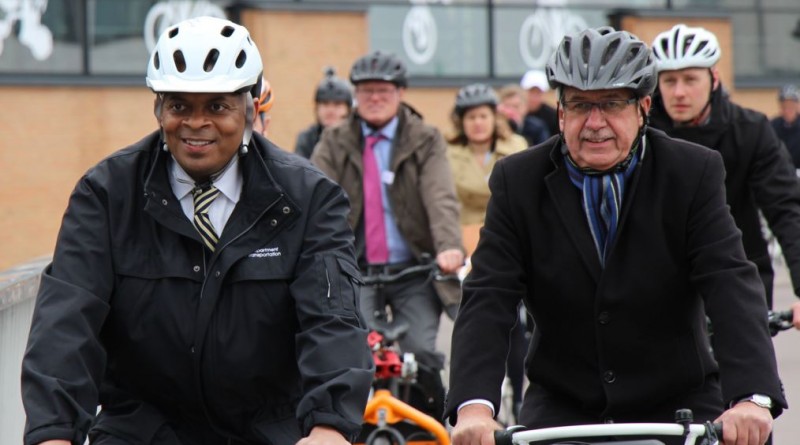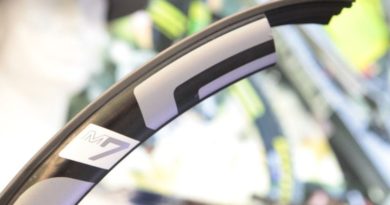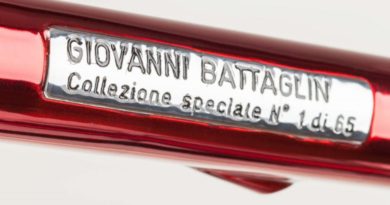London has highest helmet use in Europe, Netherlands “almost zero”
New data and analysis released by DEKRA Accident Research, covering 12,000 cyclists and e-Scooter users across Europe has found London to have Europe’s highest helmet use.
Covering Amsterdam, Berlin, Copenhagen, Ljubljana, London, Paris, Vienna, Warsaw and Zagreb, the research sought to understand the relationship between cycle use rates, safe infrastructure and helmet use.
One thing was immediately obvious, said the researchers: “When you look at the number of accidents as a ratio of distance traveled, the Netherlands is the second safest country after Denmark in which to ride a bicycle,” says DEKRA accident researcher Luigi Ancona. “Our figures clearly suggest a link between a bicycle-friendly infrastructure, the subjective feeling of safety and the rate of helmet-wearing.”
The researchers noted that, along with London’s high helmet use, there was also a correlation with high levels of high-visibility clothing, suggesting London’s cyclists have a higher perception of danger on the roads around them. 60.9% of London cyclists observed wore a helmet.
In what often proves to be a controversial talking point, there is no basis for the belief a cycle helmet is designed to protect a cyclist in an impact with a motor vehicle, though many point out it can’t hurt to err on the side of caution.
What’s striking is just how large a gulf exits between London and second placed Vienna, where 26.7% wear a helmet. In cycle-friendly Amsterdam, the lowest of all measured, just 1.1% were observed wearing a helmet.
Low rates were also observed in Zagreb (5.9 percent) and Ljubljana (9.1 percent). Occupying the middle range were Copenhagen and Paris (both 19.9 percent) and Warsaw (22.0 percent).
Though the DEKRA recommendation remains to wear a helmet, it’s not as clear cut as that. Ancona is also calling for a comprehensive strategy to improve the road safety of cyclists and indeed progress may be on the horizon for EU member states. “The infrastructure has to be bicycle-friendly and as safe as possible – but even then, to avoid the worst-case scenario, a helmet is essential,” writes the DEKRA statement.

Trends on age and type
There is little surprise that children, likely at the will of their parents, are seen to be wearing helmets more often than other age groups. However, as the grow into teen years use of a helmet that usage drops off sharply. Four of the countries where DEKRA deployed – France (age 12), Austria (12), Croatia (16) and Slovenia (15) – have mandatory helmet laws or children.
As you might expect, those renting bicycles are not often carrying a helmet around with them, arguably making infrastructure all the more important where share schemes have been deployed.
Where electric scooters have been deployed the researchers described them as “popular” transport choices, though few users wore a helmet; in every instance the rate was lower than against those cycling. Not one wore a lid in Berlin, though over in Paris just shy of 10% opted to.
Separate preliminary research suggests that, where incidents occur, the physics of an e-Scooter crash tend to see the rider catapulted forwards, most often resulting in a lower facial injury. It has been said that most cashes do not involve a third party and very often occur within a user’s first ten journeys; thereafter crash rates fall as people get used to the technology and ride feel.
“This was affirmed by our most recent e-scooter crash tests in which a dummy rode an e-scooter, once with and once without a helmet,” says Peter Rücker, Head of DEKRA Accident Research. At the DEKRA Crash Test Center in Neumünster, the e-scooter was made to crash into a curb at different angles at a speed of 20 km/h. The readings from the dummy when its head hit the ground revealed that, without a helmet, head injuries ranging from serious to fatal could be expected. With the helmet, the measured stress value (HIC36) was 97 percent lower, which means that the risk of a serious head injury was much less.
The annual DEKRA Road Safety Report, which first appeared in 2008, focuses on a different topic every year. The 2020 report covers two-wheeled modes of transportation, with DEKRA experts examining road safety in relation to bicycles, pedelecs, e-scooters and motorcycles from a variety of perspectives.




